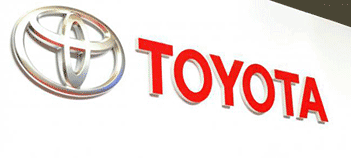In January 2009, when Toyota’s supervisory board named Akio Toyoda president of Toyota Motor Co., the multinational car manufacturer was in crisis. After 14 years of strong sales and record profits, Toyota had found itself at the center of a perfect storm.
|
ADVERTISEMENT |
Oil prices were spiking, sending the sales of large vehicles (including Toyota’s best-selling SUVs and trucks) plummeting; meanwhile, the global financial crisis had brought car loans to a halt. As the automotive industry grappled to cope with sales at multiple-decade lows, Toyota was plunged into what would become one of the biggest automotive scandals in history: a series of fatal accidents and thousands of complaints related to unintended acceleration, which prompted the recall of millions of its vehicles. In 2009, the company posted a $8.6 billion loss—its first in nearly six decades.

Toyoda, a modest, clean-cut, bespectacled man who spoke English with some difficulty, was known as a gutsy race car driver when he took on the role of CEO. The years that followed were to seal his reputation as an equally adept driver off the track.
…
Add new comment